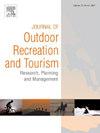艾伯塔省坎莫尔市休闲步道上亲环境行为的心理驱动因素
IF 4.4
3区 管理学
Q1 HOSPITALITY, LEISURE, SPORT & TOURISM
Journal of Outdoor Recreation and Tourism-Research Planning and Management
Pub Date : 2025-09-22
DOI:10.1016/j.jort.2025.100955
引用次数: 0
摘要
为了有效地实现人类与野生动物的共存,特别是在人类活动与大型捕食者栖息地重叠的景观中,深入了解休闲步道使用者的亲环境行为(PEB)的决定因素至关重要。人类的认知,如规范和态度,通常与peb呈正相关(Cialdini等人,2006;Pearce等人,2022;van Riper & Gerard, 2014)。本文的目的是研究三种人类认知对野生动物和小径特异性peb的影响。在文献综述的基础上,选择了三个关键的心理驱动因素作为自变量:1)个人规范;2)社会规范;3)地点依恋。此外,该研究还调查了当地人和游客之间野生动物和小径特定PEB水平的差异。现有的许多研究都考察了人类认知对一般peb的预测能力,比如回收利用、能源消耗和乱扔垃圾。本研究与公园机构工作人员合作,通过文献综述,制定了野生动物和小径支持peb的措施。2023年夏天,加拿大阿尔伯塔省坎莫尔附近的休闲步道用户进行了一项调查,重点关注当地的食肉动物(熊、狼、美洲狮等)。研究了上述三个心理变量和选定的人口统计数据对野生动物和小径特定peb的影响。结果发现,只有个人规范与野生动物和小径特定的peb显著正相关。与预测不同,地点依恋和社会规范与peb没有显著的关联。本文章由计算机程序翻译,如有差异,请以英文原文为准。
The psychological drivers of pro-environmental behaviors on recreational trails in Canmore, Alberta
For effective human-wildlife coexistence, particularly in landscapes where human activity overlaps with large predator habitats, gaining insight into the determinants of recreational trail users’ pro-environmental behaviour (PEB) is essential. Human cognitions, like norms and attitudes, are often positively associated with PEBs (Cialdini et al., 2006; Pearce et al., 2022; van Riper & Gerard, 2014). The purpose of this paper is to examine the influence of three human cognitions on wildlife- and trail-specific PEBs. Three key psychological drivers were selected as independent variables based on a literature review: 1) personal norms; 2) social norms; and 3) place attachment. Additionally, the study examines the differences in wildlife- and trail-specific PEB levels between locals and visitors. Much of the existing research examines the predictive power of human cognitions on general PEBs – such as recycling, energy consumption, and littering. This study developed measures of wildlife- and trail-supportive PEBs in collaboration with park agency staff and from a literature review. With a focus on local predators (bears, wolves, cougars, etc.), a survey was distributed to users of recreational trails near Canmore, Alberta, Canada during the summer of 2023. The three aforementioned psychological variables and selected demographics were examined for their influence on wildlife- and trail-specific PEBs. Results found only personal norms to be significantly and positively associated with both wildlife- and trail-specific PEBs. Despite predictions, place attachment and social norms were not significantly associated with the PEBs.
求助全文
通过发布文献求助,成功后即可免费获取论文全文。
去求助
来源期刊

Journal of Outdoor Recreation and Tourism-Research Planning and Management
HOSPITALITY, LEISURE, SPORT & TOURISM-
CiteScore
6.70
自引率
5.30%
发文量
84
期刊介绍:
Journal of Outdoor Recreation and Tourism offers a dedicated outlet for research relevant to social sciences and natural resources. The journal publishes peer reviewed original research on all aspects of outdoor recreation planning and management, covering the entire spectrum of settings from wilderness to urban outdoor recreation opportunities. It also focuses on new products and findings in nature based tourism and park management. JORT is an interdisciplinary and transdisciplinary journal, articles may focus on any aspect of theory, method, or concept of outdoor recreation research, planning or management, and interdisciplinary work is especially welcome, and may be of a theoretical and/or a case study nature. Depending on the topic of investigation, articles may be positioned within one academic discipline, or draw from several disciplines in an integrative manner, with overarching relevance to social sciences and natural resources. JORT is international in scope and attracts scholars from all reaches of the world to facilitate the exchange of ideas. As such, the journal enhances understanding of scientific knowledge, empirical results, and practitioners'' needs. Therefore in JORT each article is accompanied by an executive summary, written by the editors or authors, highlighting the planning and management relevant aspects of the article.
 求助内容:
求助内容: 应助结果提醒方式:
应助结果提醒方式:


